18 years later, the U.S. is engaged in negotiations with the Taliban over the future of Afghanistan. But what exactly is “the Taliban”? Contrary to popular belief, there is no single “Taliban” and America is now negotiating with a hydra-like creature to an uncertain end. Lima Charlie World’s John Sjoholm examines the history, names, events and intertwined activities that make up what is commonly referred to erroneously as the Taliban.
On March 7th, Taliban fighters engaged and wiped out an entire Afghan National Army (ANA) company of more than 50 soldiers. This was but the latest in a series of major tactical-level attacks by the militant Deobandi-group, all while pursuing a peace deal with the United States.
The Taliban are on the offensive. Not just tactically, but also in the strategic and optical sense.
Since the beginning of 2019, the Taliban have carried out a wide-spanning insurgency campaign that has killed, wounded or captured more than 400 ANA soldiers. This has put immense pressure on the U.S.-supported government in Kabul, which must also deal with an increasingly exasperated Washington D.C. leadership, upon which much of the future of Kabul’s government rests.
The devastating loss of an ANA company on March 7th happened in the northwestern Badghis Province, close to the Afghan western border to Turkmenistan. A large number of Taliban swarmed the ANA central base and its two security outposts near the ruins of the medieval city Marw al-Rudh outside of Bala Murghab. The ANA base called for air support assets to be deployed from a nearby base which houses air assets intended for such purposes. The call for support went unanswered. After a four-hour long battle, the Taliban forces breached the perimeter.
A few days later, on March 9th, yet another incident occurred in the same province. Soldiers at an ANA Forward Operating Base (FOB) spotted a group of men in the distance. With nerves still frayed from the March 7th attack, and fearing the group was a Taliban scouting party preparing for another attack, the Afghan soldiers engaged. Fearing that the FOB would fall at the hands of a numerically superior enemy, which was now returning fire, the base commander called for air support. This time, the central Afghan command answered the call to arms. American air assets sped towards the scene.
However, unknown to the soldiers at the ANA FOB, the group of men in the distance was actually a joint Afghan-American Special Operations team that had been patrolling nearby. There was no Taliban attack. Worse, the Afghan-American Spec Ops team, which thought it was under attack, had also radioed for air support.
An American air-to-ground missile (AGM or ATGM) struck the fireteam outside of the FOB. Of the 17 ANA soldiers engaged in the battle, six were killed. Nine others were badly wounded. On the Afghan-American side, one of the local commandos was reported wounded.
In the days that followed, ANA soldiers in the province began abandoning their posts amidst ongoing Taliban ground offensives. Most of the desertions were from the military Afghan Border Police units operating in the province. Fleeing across the border into Turkmenistan, initial waves of soldiers were able to do so largely undetected. The Turkmenistan Army quickly caught on. At least 100 Afghan soldiers, with some reports indicating more than 150 soldiers, attempted to flee but would face immediate expulsion from Turkmenistan once found.
In the past two weeks the province has suffered the loss of 78 soldiers killed, wounded or captured. Abdul Aziz Beg, head of the Badghis provincial council, stated that his “district is on the verge of collapse” due to the pressure that the Taliban is putting on it. By March 16th, the district had mostly fallen into Taliban control.
Saleh Mohammad Mubarez, the commander of the Afghan local police force in the district, stated to the New York Times that “the situation is very bad” and that “reinforcements have not been enough. The air force must help and launch airstrikes.”
During the fighting on March 7th, pilots from the Afghan Air Force (AFA) did attempt to land two Mi-17 helicopters to deploy reinforcement troops. They were forced to abort after coming under intense fire from the Taliban fighters. In recent years, the quickly ageing AFA fleet of Soviet-era helicopters has become increasingly unreliable due to “hard use and poor maintenance”, to the point where pilots will avoid pushing the ageing airframes.
Earler this year, at the World Economy Forum in Davos, Switzerland, Afghan President Ashraf Ghani stated that 45,000 members of the Afghan security forces had died since he took office in 2014. This is the highest official number provided by the Afghan government to date. For reference, between 2001 and mid-2016 over 4,000 International Security Assistance Force (ISAF) soldiers and civilian contractors, and over 62,000 Afghan national security forces were killed. The civilian death toll was reported at 31,000. By August 2016, the combined death toll in relations to the Afghan War stood at 173,000 dead and more than 183,000 seriously wounded.
While these events are taking place on the tactical ground-level, on the strategic level things are significantly different. Over crumpets in Doha, the capital of Qatar, negotiators from the Taliban and the United States are engrossed in negotiations over the future of Afghanistan. But just who are we negotiating with? Who are the Taliban?
It is well that war is so terrible, otherwise we should grow too fond of it.
–General Robert E. Lee
Afghanistan: A Long History of War
What is today generally referred to as the Taliban has its origin as a faction within the U.S.-supported Afghan Mujaheddin-militia, which fought against the Soviet Union’s ten-year long occupation of Afghanistan between 1979 and 1989. U.S. support of the Afghan tribal militia movements in their struggle against the Soviet Union did, at the time, serve a necessary strategic purpose, but has since become the very example of unintended consequences, or “blowback” in intelligence community phraseology.
The Soviet withdrawal from Afghanistan, after a conflict that cost $36 to $45 billion and the lives of 14,453 Soviet soldiers, was completed on February 15th, 1989. With its withdrawal, the Soviet Union left its structured and chosen government in Kabul to fend for itself, with only minuscule amounts of covert funding from Moscow. Like Afghanistan today, the Soviet-Kabul government was utterly dependent on foreign money, skills and resources.
The lion’s share of non-Soviet money continued to stream through the coffers of the Pakistani intelligence service, the Inter-Services Intelligence (ISI). The Americans, along with the Saudis, relied nearly entirely on the ISI in guiding their funds to the “appropriate” destinations. The politicos in Pakistan’s capital, Islamabad, quickly took advantage of this opportunity and continued to cement their relationship with warlords and up and coming Islamic scholars.
Almost immediately, Pakistan based and supported Afghan warlord Gulbuddin Hekmatyar set his sights on Kabul. Hekmatyar’s ambitions led to a counter-alliance of other warlords being formed with Soviet-funding. The two primary players within this alliance were Uzbek warlord Abdul Rashid Dostum and the Tajik Ahmad Shah Massoud, also known as the “Lion of Panjshir”. Dostum and Massoud would seek to defend Kabul from Hekmatyar together.
Dostum and Massoud would be joined by Karim Khalili of the Shia-Hazara minority, an Iranian-backed warlord. Dostum provided helicopters and tanks to leapfrog the backcountry Panjshiri fighters into the heart of Kabul. However, by January 1992, the Soviets cut off funding as part of an agreement with the Americans to end their covert war, and by March, President Najibullah, often referred to as Dr. Najib, resigned from office.
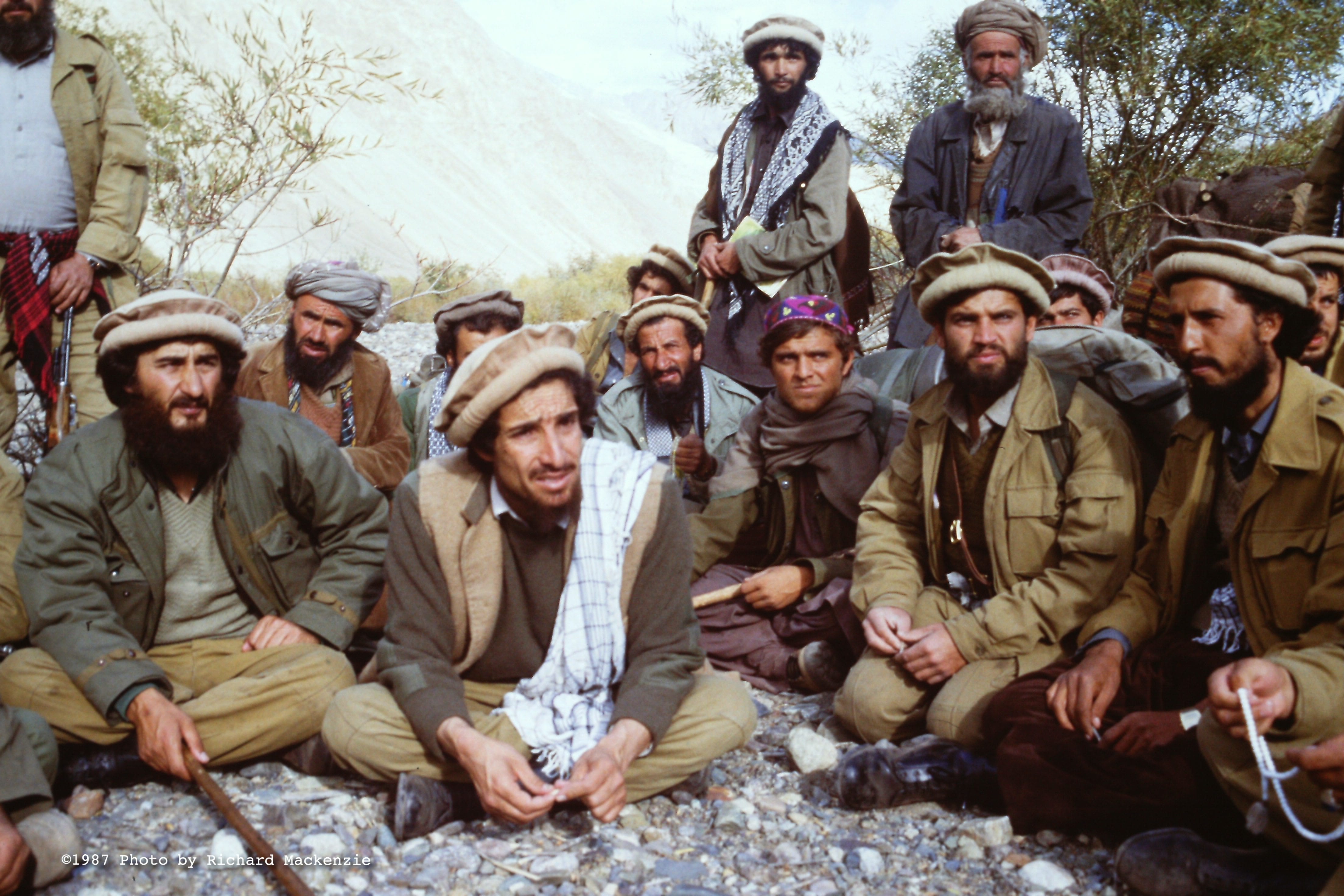
The post-Soviet years in Kabul are mostly lost to history and are perhaps the most turbulent ones for Afghanistan. Dostum and his band of loyal men initially joined Massoud in April of 1992, after arresting Najibullah, to battle Hekmatyar. Dostum and his largely Uzbek forces played a key part in preventing Hekmatyar’s total control of Kabul in 1992.
Until this point, the war had been fought in the countryside, leaving Kabul as a shining example of reconstruction and Soviet infrastructure planning. This is still evident in the ugly boxy apartments and government offices in Kabul. Massoud and Hekmatyar are credited with causing most of the destruction in Kabul, using stockpiled US-supplied weapons, during 1992.
By 1994, Dostum joined Hekmatyar against Massoud to prevent the complete destruction of Kabul. Kabul went from being merely a war-torn city in despair to becoming a bedlam of daily street to street fighting. This led to an attempt by some to pit Afghan against Afghan to completely destroy what remained of the capital. Throughout the country, whatever trace there was of a centralised government vanished. Dostum’s men finally fought their way out of Kabul and returned to the North. Dostum created a state within a state issuing his own currency, even having his own airline.
The first thing to recognize not just about Afghanistan but about any poor undeveloped country is that as big as it looks on the map, it’s much bigger when you’re there.
-Robert D. Kaplan
Enter, the Taliban
Amid this chaos, by 1994, a small group consisting of a mixture of former Mujahideen and Afghan refugees with more extreme beliefs emerged from the so-called madrasa, meaning religious schools, which had been created along the Afghan-Pakistani border. These schools were largely created by the Pakistani religious Sunni Deobandi political party Jamiat Ulema-e Islam, meaning Assembly of Islamic Clerics, and the ISI. The financing came primarily from the coffers of the Kingdom of Saudi Arabia, distributed by the ISI.
During the later stages of the Afghan-Soviet War, these schools had educated tens of thousands of refugee children “in a spirit of conservatism and religious rigour” [1]. Many of these children would later come to join emerging local extremist groups. Many of these new groups would embody a new variety of political Islam, a “hybrid” between Salafi-Jihadism and Deobandi Jihadism.
Even more of these children would go on to continue the violent jihad throughout the world as organisers of insurgencies or terror attacks. Many of the thousands of so-called “Afghan Arabs”, foreign volunteer fighters mainly provided by Muslim countries in the fight against the atheist Soviets, after leaving Afghanistan went on to become “capable leaders, religious ideologues and military commanders”. [2]
The primary new and emerging group called themselves the “taliban”. The term Taliban or Talib has its root in the Pashto word tālib, meaning “student”. This first, proto-Taliban group was headed by Mohammad Omar, who would become known to the world as Mullah Omar in the subsequent years. He would recruit heavily from these border madrasa.
Together with a group of like-minded religious teachers from the Pakistani border region madrasa and pupils, the movement began rather humbly; fifty armed young men with twenty rifles, led by some thirty veterans from the Afghan Mujahideen movement. The majority of the young men came from the refugee camps. Initially, the group sought to clear the roads and combat the warlords in the southern parts of Afghanistan.
With a primary focus to combat the rampant corruption that had emerged from the civil war, they were initially welcomed by Afghans weary of warlord rule. They would also focus on the abolishment of the so-called Bacha Bazi. “Bacha Bazi”, in the literal translation meaning “boy play”, is commonly referred to in the West as “dancing boys”. This practice refers to the sexual relations between older men and younger adolescent boys, often involuntarily. Supposedly, Omar became sickened by the abusive raping of children by warlords and turned against their authority.
To accomplish their goals the Taliban initiated a recruitment drive. Recruitment was based around ground level optics that the Taliban could provide law and order in a land that had for so long only known lawlessness and anarchy.
Other, un-Islamic endeavours were also prohibited by the Taliban. This included the production of Afghanistan’s premium export— opium. After over a decade of constant war, Afghanistan’s ecological and agrarian potential was devastated. All but two percent of Afghanistan’s forest cover country-wide had been destroyed. The nation had, during the 1960s, been known for its wild pistachio trees, the roots of which had been exported worldwide for therapeutic uses. Of this, virtually nothing remained. All that did remain, as far as agricultural options were concerned, were the fiercely resilient papaver somniferum plant, more commonly known as the poppy plant. The poppy plant is the primary ingredient in poppy tears, more commonly known as opium. The Taliban would early on enforce a ban on poppy farming via threats, forced eradication, and public punishment of offenders.
Indeed, in July 2000, Omar would go as far as to collaborate with the U.S. over the eradication of poppy seeds and heroin production in Afghanistan. As part of this collaboration, the Taliban would aid and support U.S. Drug Enforcement Agency agents and United Nations observatory units in tracking and destroying opium fields in what would become the world’s most successful anti-drug campaign to date. By the end of Taliban government rule, opium poppy farming in Afghanistan saw a reported 99 per cent reduction, equaling 75 per cent of the world’s supply of heroin at the time.
It is important to note that while these numbers are in and of themselves verifiable, the intent behind the Taliban’s action is largely not. Dried opium can easily be stored long-term with little to no equipment. Some [3] observers have suggested that the actions of the Taliban were, in part, a case of elaborate [4] market price manipulation[5].
![image [An Afghan man harvests opium in a poppy field while US soldiers look on in a village in Golestan district, Farah province, Afghanistan (Caption: The Telegraph; Photo: Reuters)]](https://limacharlienews.com/wp-content/uploads/2019/03/Afghanistan-poppy-field.jpg)
By 1996, the Taliban had entered a devastated Kabul. The strange westernised landscape was an affront to their 7th-century world view. TVs were smashed, cassette tapes gutted and women were forced to cover their faces. This direct conflict with Western NGOs resulted in a well funded PR campaign forever branding the Taliban as the enemy. Journalists were given one day tours to decry the lack of education for women, the wearing of beards and even Friday executions at the Olympic themed Kabul Stadium. The message, however, ignored the fact that US-backed Hekmatyar was far more backward and primitive than the Taliban. Under Taliban rule, Kabul saw the first lull in fighting since the Soviets had left.
With Kabul largely under Taliban control, the city settled into a calm but primitive dystopian centre. This control quickly grew so absolute that, on the eve of September 26, 1996, without firing a single shot, Taliban fighters walked into a secure United Nations compound which was providing a safe haven for former President, Dr. Najib. Once inside, on the personal order of Taliban leader Mullah Omar, they mercilessly beat and tortured Najib in front of UN personnel. Inches from death he was then tied to the back of a pickup truck and dragged down Kabul’s streets. Dr. Najib’s brother, Ahmadzai, who had been staying at the UN compound was given much the same treatment, with the kindness of a bullet to the head first.
The Taliban next had to decide what to do with the north, an alien territory for the Pashtun group. The group quickly decided on a draconian campaign of scorched earth. They began airlifting Pakistani and Afghan fighters into Kunduz every 20 minutes while a motorised ground force swept to the west killing and burning villages as they encountered severe resistance.
Dostum, who had fought his way out and abandoned Kabul after he saw the destruction created by Massoud and Hekmatyar, rejoined his old foes against the Taliban. Dostum, Massoud and Karim Khalili created the Northern Alliance in 1996 to combat the encroaching mullahs. Massoud was able to hold out, but Pakistani money bought off Massoud’s number two commander forcing Dostum to flee to Turkey. By 2001 a few of Dostum’s men held out in the mountains while Massoud was getting funds from the Central Intelligence Agency and Iran to hold on.
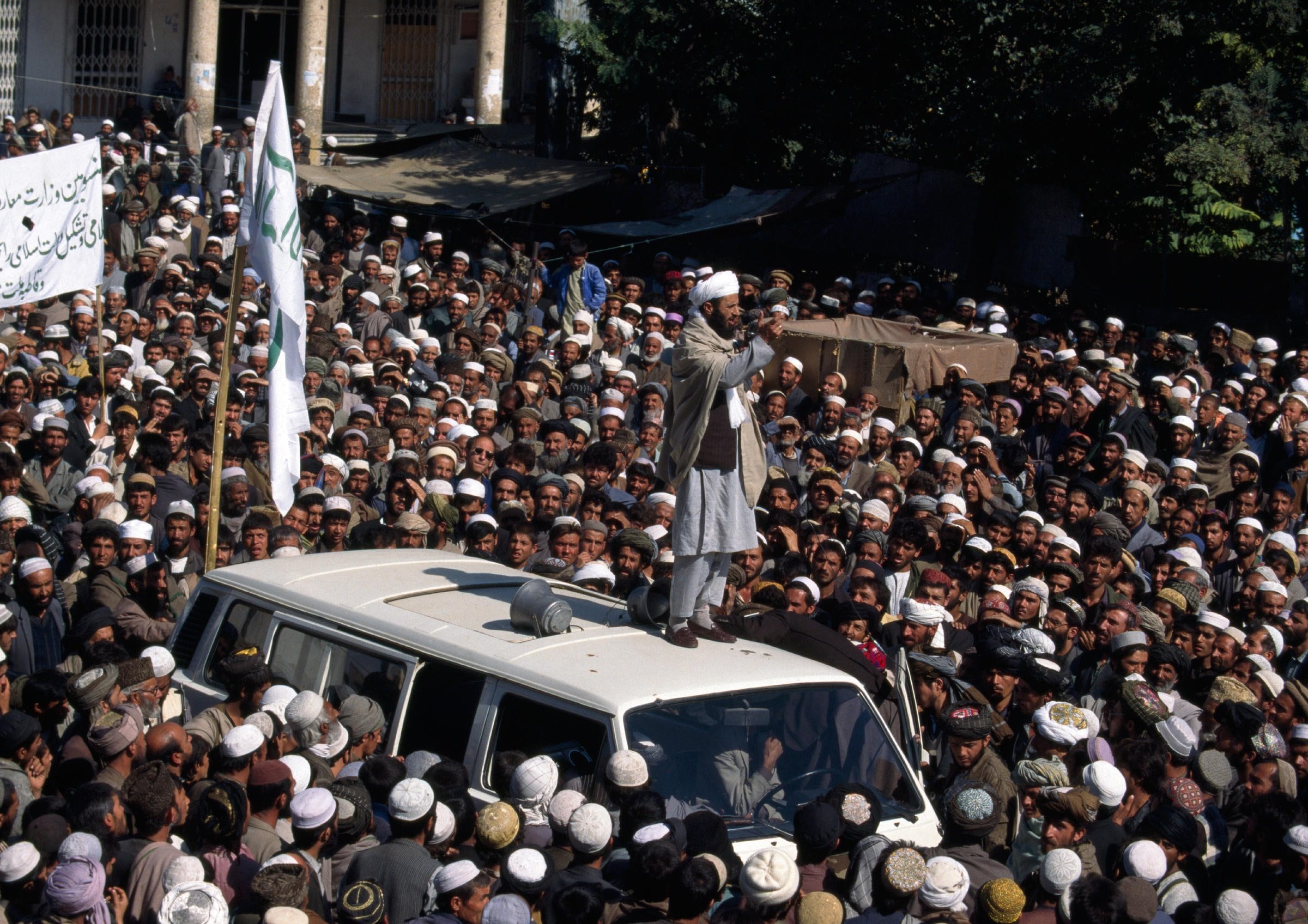
The bloody, first civil war in Afghanistan raged from 1992 to 1996 and ended with the Taliban declaring Kabul the capital of their Islamic Emirate of Afghanistan (IEA). The Taliban IEA operated alongside the internationally recognised, albeit failed, Islamic State of Afghanistan from 1996 to 2001. The IEA would become a recognised nation by a select few, yet predictable cadre of nations: Pakistan, Saudi Arabia and the United Arab Emirates would all publicly recognise it.
Omar’s rule over Afghanistan, in the shape of the IEA, would soon falter as the American military responded to al Qaeda, an ally whose leadership was under Taliban protection, after the September 11, 2001 attacks on the U.S.
When you’re wounded and left on Afghanistan’s plains, and the women come out to cut up what remains, jest roll to your rifle and blow out your brains and go to your gawd like a soldier.
-Rudyard Kipling
The Taliban: An Origin Story
The Taliban movement’s ultimate goal, under Mullah Omar, was ambitious and on a strategic level; the creation of an Islamic nation-state. This state, which was supposedly established through the creation of the IEA, was intended to be ruled under established Sharia law. The belief that the IEA was actually governed by Sharia law is one often assumed by adherers of the Taliban cause, or by debaters seeking to appease the dialogue. To this day, one can enter a religious school in, for instance, Amman, the capital of Jordan, and be told that the “Taliban were the perfect Muslims” and that Afghanistan under their rule was the ideal implementation of Sharia. This is, however, a severe false narrative in a multitude of manners.
During the five years that the Taliban ruled Afghanistan, there was no genuine rule of law or an independent judiciary. Instead, the “rule of law” was an ad hoc rudimentary system, that was loosely based on the local Taliban commanders’ often draconian interpretation of Sharia law. As such, for example, the death penalty was extensively used through public executions, seeking to instill fear in observers. Adulterers were stoned to death in public. Thieves had a limb or two (one hand, one foot) severed. While aspects of these penalties are indeed part of the more reactionary interpretations of Sharia law, it was never solidified as a legal system that could reliably pass predictable verdicts, instead relying on impromptu decisions based on tribal dictums and the right of might. Often times, the courts were said to have been in sessions for mere minutes before passing judgment.
Omar’s movement would quickly grow, from the original 50 fighters to 12,000 fighters by the end of its first year. Most had been recruited from the conservative Pakistani-Saudi organised schools in the borderland area. As its numbers grew, the Taliban also began to take in more and more people with their own interpretations of what had to be, and how to accomplish this.
Predictably, the movement began to show signs of fracturing.
As the Taliban gained more and more power, Omar appeared more and more willing to let other, emerging power players take the reins. Soon Omar would become known as a “reclusive, pious and frugal” leader, seldom leaving the safety of his enclave. This description is eerily familiar to that of Abu Bakr al-Baghdadi, the creator of the Islamic State in the Levant (IS, ISIS or ISIL).
In part, Mullah Omar’s decision to take a step back was likely a survival strategy. By awarding rule over provinces and districts to ambitious warriors, he could ensure that they would not coordinate and plot against his rule. A strategy employed by a multitude of rulers in the Roman, Ottoman and British empires, it works reasonably well so long as the majority of governors and military leaders remain loyal to their leader, the winds of war are favourable, and one’s rule is perceived as absolute. Even under reasonably ideal circumstances, the approach has historically shown to be a treacherous one.
By late 2001, neither the winds of war, nor Mullah Omar’s rule, were perceived as favourable. The proverbial wolf, dressed in the cloth of American and NATO forces, was at the Taliban’s door, making it impossible to slow the movement’s fracturing.
There is no rule of law in most of the southern parts of Afghanistan—the bullets rule.
-Antonio Maria Costa, Exec. Dir. UN Office on Drugs and Crime ((UNODC) 2002-2010)
The Many Faces of the Taliban
Mullah Omar’s Taliban would come to be referred to as the “mainstream Taliban”. To this day, while it still represents the majority of the Taliban movement in the tactical and political-strategic spectrum, it does not represent the entirety of the Taliban movement.
What is clear, is that the Taliban is not one unified movement. Nor is it one, as it is often described, homogenous movement of Pashtos. Instead, it is an umbrella term used to describe a series of different individual power players, affiliated groups and even agendas. While the Taliban largely consists of Pashtun, there are also noteworthy numbers of Tajiks, Uzbeks and Turkmens within its proverbial ranks. These are in addition to the reportedly 1,000 non-Afghan fighters originating from outside of Central Asia, from such places as neighbouring China, Chechnya, Tunisia, Yemen, Saudi Arabia, and the Levant.
Those that attribute the Taliban epithet do, in the general sense, have commonly held beliefs. First one is, of course, the need for an ever-expanding Islamic state. Second is a wide array of grey, largely undefined, underlining tendencies. These tendencies can range from xenophobia (often found in Afghanistan), to ambitious jingoism, all the way to the somewhat paradoxical anti-imperialist notion. Another key belief that all Taliban factions share is a fear of progressive secular values and democracies thereof.
While it is true that the movement is largely one that originates from the ethnic Pashtun group, since its creation it has morphed out of necessity. In part, this morphing has occurred due to the need to draft from the nearly endless pool of recruits which happen to be foreigners, while also meeting the increase in competition from foreign Jihadist groups.
![image [Taliban leader Mullah Mohammad Omar, who lost an eye due to a shrapnel wound, died in 2013 [Rahmat Gul / AP]](https://limacharlienews.com/wp-content/uploads/2019/03/Mullah-Omar.jpg)
One such example, probably among the most high profile, is the Fidai Mahaz splinter group created by the (former-)Taliban commander Najibullah. Born in April of 1979, Najibullah joined the Taliban campaign at age 15, in 1994. As Western forces entered Afghanistan in 2001, Najibullah would become operational chief of insurgent forces inside Kabul. While operational chief, he would serve as sub-commander under the infamous Mullah Dadullah Akhund.
Mullah Dadullah had belonged to the original 50 Taliban and had been a close aide to Omar. Before joining Omar, Mullah Dadullah had participated in the war against the Soviets, during which he reportedly lost his right leg. He would gain infamy for two particular acts. The first was the violent suppression of a minority uprising in the Bamyan province in 2000. The second was the 2001 destruction of the Bamiyan Buddhas.
When Mullah Dadullah died in a British-American Special Operations raid in the Helmand Province in 2007, Najibullah immediately took command of most of Dadullah’s forces.
Yet Najibullah would eventually leave the Taliban movement in protest for what he perceived as the group becoming overly moderate. In early 2012, the Taliban had established a diplomatic office in Doha, the capital of Qatar, to negotiate with the Afghan government. This, Najibullah held, was unacceptable. One does not negotiate with the enemy. As such, he would establish the Sacrifice Front of the Islamic Movement of Afghanistan, or Fidai Mahaz.
We don’t consider the battle has ended in Afghanistan … The battle has begun and its fires are picking up. These fires will reach the White House, because it is the center of injustice and tyranny.
-Mullah Mohammed Omar
Another example of the complexity of the Taliban movement is its Pakistani chapters. In December 2007, 13 Pakistani Deobandi militia groups would join to form the umbrella group Tehrik-e-Taliban (TTP) – the Taliban movement of Pakistan. The TTP would be headed by Baitullah Mehsud. Baitullah was the pupil of the infamous Pakistani Mujaheddin Nek Mohammad. Baitullah and Mohammed operated a network of safe havens throughout the Waziristan badlands. This was until June 2004, when Mohammad was killed in the first-ever U.S. drone strike inside South Waziristan, the Federally Administered Tribal Areas, Pakistan. Baitullah’s TTP was created as a stand-alone group, without the permission of the Afghan Taliban leader, Mullah Omar.
It would soon, however, join the fold under the mainstream Taliban-movement banner. By December 2008, the two leaders had put aside their differences. The TTP would join other South-Central Asian groups, such as the Lashkar-e-Jhangvi (LeJ) and Harkat-ul-Jihad-al-Islami (HuJI) under the Taliban umbrella. As part of this, TTP was reshaped into a new entity known as the Shura Ittehadul Mujahideen (SIM), meaning Council of United Mujahedeen.
SIM would last only a handful of months before internal friction caused the group to split into three new entities, one of which was again headed by Baitullah and named TTP. At its peak in 2014, TTP was believed to have a 25,000 strong fighting force.
As a member of the Taliban movement, Baitullah would become one of the most prolific of the leaders of the general movement. The ISI would soon place the 2007 assassination of the former Pakistani prime minister Benazir Bhutto at his feet. A September 2007 report from the United Nations attributed almost 80% of suicide bombings in Pakistan to Baitullah. Pakistani officials traced an estimated 90% of suicide and militant attacks within Pakistan throughout the 2007–2009 period to his South Waziristan stronghold. Baitullah’s reign of terror only ended when a U.S. drone strike ended him on August 5th, 2009.
After 2014, we will support a unified Afghanistan as it takes responsibility for its own future.
– President Barack Obama
Is this a dagger which I see before me?
In April 2013, Mullah Omar died under somewhat questionable circumstances. According to some reports, he was assassinated by Mullah Akhtar Mansour who would succeed him in 2015. Between 2013 and 2015 the mainstream Taliban-movement operated without an elected leader since Omar had refused to name an heir to the proverbial throne. During these years, Mullah Mansour had to settle for the title of political committee chief of the Taliban movement.
As a result of this, many of the inner Taliban leadership would come to separate from the mainstream Taliban-movement, more so as it came under the leadership of Mullah Mansour.
The doubt that Mansour’s leadership met has many causes, some more legitimate and fundamental than others. Part of that doubt comes from the persistent and hard-to-kill rumour that it had been Mansour that shot Omar. This after Mansour, allegedly, having poisoned Omar’s kidney medicine shipments from Dubai for years.
Another is that under Mansour’s leadership opium production yet again bloomed. The Taliban opium harvesting ban was de facto dropped in 2008, as the Taliban needed additional sources of revenue to fuel their insurgency. In the areas under Mansour’s control, the Taliban allegedly increased their involvement in trade logistics. This stands in contrast with the areas that are under the control of other Taliban commanders, such as Mullah Manan, the Taliban commander of the Helmand Province, who continued Omar’s dictum of seeking out and destroying opium harvests and production facilities.
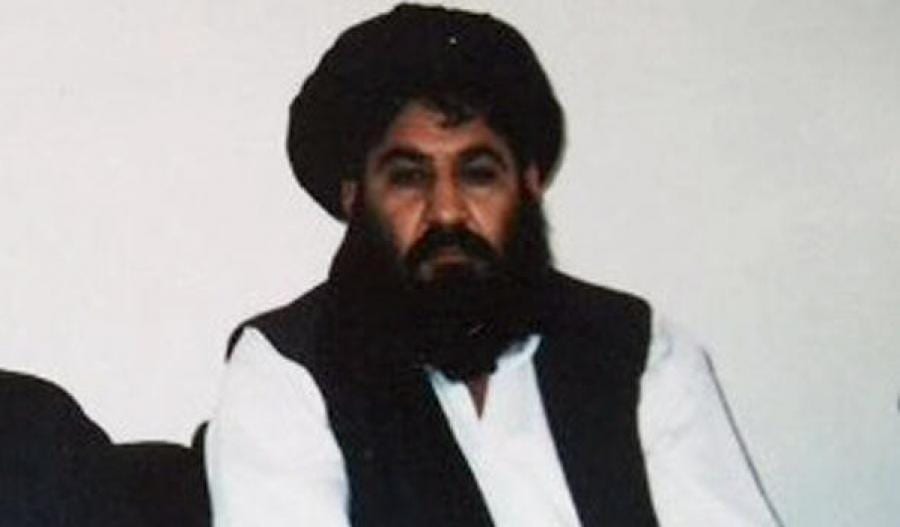
As Mansour’s role as the Taliban frontman became increasingly fraught with controversy, he staunchly refused the notion of negotiating with Kabul or the U.S. This despite the growing number of Mullah Omar-era Taliban leaders that advocated for negotiations.
Mansour’s rule would come to a sudden end on May 21st, 2016, when an AGM-114 Hellfire missile struck the taxi he was riding in, having been launched by a U.S. military MQ-9 Reaper drone above the N-40 National Highway, near Ahmad Wal. Both Mansour and his accompanying bodyguard died in the explosion. Then-U.S. President Barack Obama subsequently stated that he had hoped Mansour’s death would lead to the Taliban joining peace negotiations.
On May 26th, 2016 Mawlawi Hibatullah Akhundzada was named the successor of Mansour. He had previously served as deputy commander for Mansour. Unlike the controversy surrounding Omar, Mansour had apparently sought to ensure a clear line of succession, naming Akhundzada as his successor in his will.
Akhundzada would also initially reject the notion of peace talks with the West. This attitude appears to have changed by October 2018.
The king who is situated anywhere immediately on the circumference of the conqueror’s territory is termed the enemy. The king who is likewise situated close to the enemy, but separated from the conqueror only by the enemy, is termed the friend (of the conqueror).
-Kautilya, Arthasastra, Book VI, around 4th century BC
The Enemy of My Enemy is My Friend?
As the infighting and fracturing of the mainstream Taliban-movement raged, other groups began to recruit viable assets from the movement. In effect, the mainstream Taliban-movement was being cannibalised. This came not only from its own elders seeking to create their independent power blocks, but by foreign entities as well. The premier example of this is ISIS-KP, which established itself in Afghanistan in 2015. ISIS-KP quickly became a direct tactical opponent and competitor for recruits with the various Taliban factions.
At first, the Taliban leadership attempted to seek a diplomatic recourse with the IS-leadership. A letter was dispatched to Baghdadi requesting that all recruitments in Afghanistan would halt, and what troops had amassed would be placed under the Taliban banner.
The Taliban would never receive a formal response to their request.
Instead, Taliban fighters would clash with ISIS-KP forces in the Nangarhar Province in June 2015. ISIS-KP had sought to seize territory in the province, territory which was under Taliban control. Within a few months, the Islamic Movement of Uzbekistan (IMU) would join under the ISIS-KP banner, to fight the Taliban.
Multiple factions of the Taliban would join to launch an offensive against the Uzbek group in the Zabul Province. The offensive caused heavy casualties on the IMU forces and pushed them back over the Afghan-Uzbek border. This setback would, however, not deter ISIS-KP from continuing its Afghan establishment drive.
By late 2015, ISIS-KP had enough of a presence in the Khorasan Province to establish a stronghold, and it controlled territory in both Helmand and Farah. The group also began to broadcast radio propaganda in Pashto and Dari.
In fact, the battle against ISIS-KP became one subject that the vast majority of the Taliban enclaves could agree on. The long-standing ally of the Taliban, al Qaeda, also found itself keen on joining the fray against ISIS-KP.
Al Qaeda, which is presently under the leadership of the Egyptian Islamic militant Ayman al-Zawahiri, has multiple reasons to fight the Islamic State. In early 2015, Zawahiri swore allegiance to the newly appointed leader of the mainstream Taliban-movement, Mullah Mansour on behalf of himself and all men under his command. This allegiance included those fighting under the al Qaeda regional branches, such as the Horn of Africa affiliate al Shabaab. The Islamic State was, at the time, part of the al Qaeda umbrella organisation under Zawahiri’s leadership. The Islamic State originated as part of the al Qaeda or al Nusra umbrella organisation. It splintered from its parent organisation because its leader, Abu Bakr al-Baghdadi, considered Zawahiri too moderate.
![Image [Photo released by the Afghan Taliban on May 25, 2016 shows, according to the Afghan Taliban, Mullah Haibatullah Akhundzada posing for a photograph at an undisclosed location.][AFP]](https://limacharlienews.com/wp-content/uploads/2019/03/Mawlawi-Hibatullah-Akhundzada.jpg)
Baghdadi’s Islamic State has been incredibly ambitious, seeking to create its caliphate within the Syrian borders and carrying out terror attacks across the world. By so doing, Baghdadi has managed to attract a new generation of jihadist recruits. These recruits would otherwise have likely joined al Qaeda.
The measure of success for any terror organisation is, in essence, its ability to recruit.
Jointly, the Taliban factions and al Qaeda launched several offensives on the ISIS-KP strongholds. By early 2016, the two had pushed ISIS-KP from the Farah Province and crippled their abilities in the Helmand Province.
The keenness with which the Taliban and al Qaeda opted to combat ISIS-KP would even reach the point where, in August 2018, the Taliban would make a request to the American military in Afghanistan to halt its airstrikes. This, the Taliban spokesperson in Doha argued, would enable the Taliban fighters to crush ISIS-KP. The Americans refused the suggestion, however, and the air strikes against ground targets continued. Despite this, the Taliban continued their offensive on the ISIS-KP fighters, which resulted in massive amounts of ISIS-KP fighters surrendering to the Afghan government to avoid capture by the advancing Taliban forces.
Gains achieved at great cost against our enemy in Afghanistan are reversible.
-James ‘Maddog’ Mattis, former USMC General and Secretary of the U.S. DOD
Negotiations with the Devil on the 25th Parallel
After eighteen years of Western involvement, the Afghan conflict appears no closer to a tactically induced end. Instead, it has turned into a bloody stalemate where the only victory possible appears to be away from the battlefield, at the negotiating table.
On February 25th, in Doha, situated on the 25th parallel, U.S. Special Envoy Zalmay Khalilzad met with the chief negotiator from the Taliban, Mullah Abdul Ghani Baradar. Baradar had been released from Turkish jail on October 24th, 2018 at the request of the United States just so he could participate in the negotiations. His release had been one of the key requirements provided by the Taliban to enter talks.
Another, equally important requirement, nay demand, by the Taliban was that the central Afghan government in Kabul would be excluded from participating in the talks. The Taliban continue to refuse to acknowledge that government, deeming it illegitimate. The Kabul government has on a number of occasions understandably objected to their exclusion, stating that this act undermines the central government’s legitimacy in the upcoming 2019 national election.
On both counts, Washington was quick to adhere. In fact, Washington went further still. On March 18th, a senior U.S. diplomat informed Hamdullah Mohib, who serves as Ghani’s national security adviser and representative in security-related matters, that Washington would no longer deal with Mohib at all. This after Mohib had, on March 14th, questioned the motive of Khalilzad, the U.S. Special Envoy involved in the negotiation with the Taliban, in agreeing to exclude the Kabul government from the talks.
Now, less than a month in, the negotiations for the future of Afghanistan are in full swing and have begun to take shape. Presently, both parties appear to be equally keen on the withdrawal of all NATO troops from Afghanistan over a three to five year period, which in turn would be finalised with a power-sharing agreement between the U.S.-supported government in Kabul, and the Taliban.
![Image [U.S. Special Envoy Zalmay Khalilzad. (Photo: Hiroko Masuike / AFP]](https://limacharlienews.com/wp-content/uploads/2019/03/Zalmay-Khalilzad.jpg)
If such an agreement comes to terms it would mean that the leader of the Western international community, meaning the U.S., has in-essence legitimised the Taliban, and done so over the dead bodies of a still-fragile Afghan sovereignty and democracy. No doubt, before long, Afghanistan will find itself under the rule of the new, gentler version of the Taliban. Probably through the use of seemingly democratic means.
For the past few years, the Taliban appear to have been preparing for just such an eventuality. Seemingly, the Taliban movement has taken a page out of Hezbollah in Lebanon’s playbook, which al Qaeda in Yemen has also successfully adopted. As such, they have operated a massive campaign to change the perception, the optics of the group. This is not just in rural Afghanistan, but in the world at large. This includes efforts to open new schools, at times even cooperating with U.S. aid organisations to refurbish these schools, throughout their controlled provinces. This also includes providing protection for, and at times even overtly supporting, the building of infrastructures such as roads and power grids.
These are all developments the Taliban would have shunned in the mid-90s, developments that Afghanistan’s present-day central government has struggled to provide to its rural citizens.
Yet, from a history where Afghanistan’s vast poppy fields have supported a massive opium market, China, Russia and the U.S. now vie over lucrative mining rights in the country’s mineral rich expanse.
The men and women of Afghanistan are building a nation that is free, and proud, and fighting terror – and America is honored to be their friend.
-U.S. President George W. Bush
No doubt America is willing to be a believer; a believer that the new Taliban, Taliban 2.0, is the real thing. If a pseudo-democratic election of a Taliban government did come to pass, it would be with a certain degree of approval from Washington. Even if this means losing what little is left of America’s core soul. Just as long as America never has to militarily enter the graveyard of empires that is Afghanistan ever again.
In December 2018, it was announced that the already delayed presidential election, which was disrupted by the ongoing battle between the Taliban and the Islamic State, would be pushed again from April 2019 to July or August 2019. In October 2018, parliamentary elections were held after a four-year delay due to electoral fraud and widespread ballot stuffing. Despite technical failures and 170 killed or wounded in bombings and rocket attacks throughout the first day of voting, the Independent Election Commission (IEC) deemed voter turnout in the 2018 October parliamentary elections to be “impressive” at 45 per cent, with women participating at a “historic” fraction of 33 per cent of the voters.
On March 20th, the Ghani administration in Kabul announced that it would yet again postpone the upcoming national election. This time until September 28th. Officially this was again due to technical difficulties. Reality is more likely to be that the Kabul administration is waiting to see just how they must manage what the Doha talks produce.
Henry Kissinger had stated in 2014, “The high probability is if American forces withdraw from Afghanistan and if no alternative international arrangement is made then the historic contests between the regions and the sects will reappear, the Taliban will re-emerge, and a very complicated and maybe chaotic situation will develop.”
Many question whether this is the victory that America and its allies sought, or whether this is just a deal struck with the devil. Many, such as Lima Charlie News’ own Doug Brooks believe that a negotiated peace with the Taliban would simply be a betrayal of the sacrifices made by so many fighting men and women throughout this conflict.
Yet again, politics brings to mind the immortal words of T.S. Eliot:
“… This is the way the world ends / Not with a bang but with a whimper.”
John Sjoholm, Lima Charlie News
[Edited by Anthony A. LoPresti]
[Subscribe to our newsletter for free and be the first to get Lima Charlie World updates delivered right to your inbox.]
John Sjoholm is Lima Charlie’s Middle East Bureau Chief, Managing Editor, and founder of the consulting firm Erudite Group. A seasoned expert on Middle East and North Africa matters, he has a background in security contracting and has served as a geopolitical advisor to regional leaders. He was educated in religion and languages in Sana’a, Yemen, and Cairo, Egypt, and has lived in the region since 2005, contributing to numerous Western-supported stabilisation projects. He currently resides in Jordan. Follow John on Twitter @JohnSjoholmLC
Lima Charlie World provides global news, featuring insight & analysis by military veterans, intelligence professionals and foreign policy experts Worldwide.
For up-to-date news, please follow us on twitter at @LimaCharlieNews
SOURCES
[1] Kepel, Gilles (2006). Jihad: The Trail of Political Islam. Pages 142-143.
[2] Rashid, Ahmed (2012). Pakistan on the Brink. Pages 127-158.
[3] Martin, Mike (2014). An Intimate War.
[4] McColm, J. (2004). Understanding the Dynamics of International Heroin Markets: Making Better Use of Price Data to Measure the Impact of Drug Control Strategies. Bulletin on Narcotics 56(1-2), pp. 89-103.
[5] UNODC (2005). Summary Findings of Opium Trends in Afghanistan, 2005.
In case you missed it:

![Image Strike a deal with which devil? The many faces of the Taliban [Lima Charlie News][Image: Anthony A. LoPresti]](https://limacharlienews.com/wp-content/uploads/2019/03/Many-faces-of-the-Taliban-Lima-Charlie-News-Anthony-LoPresti.png)
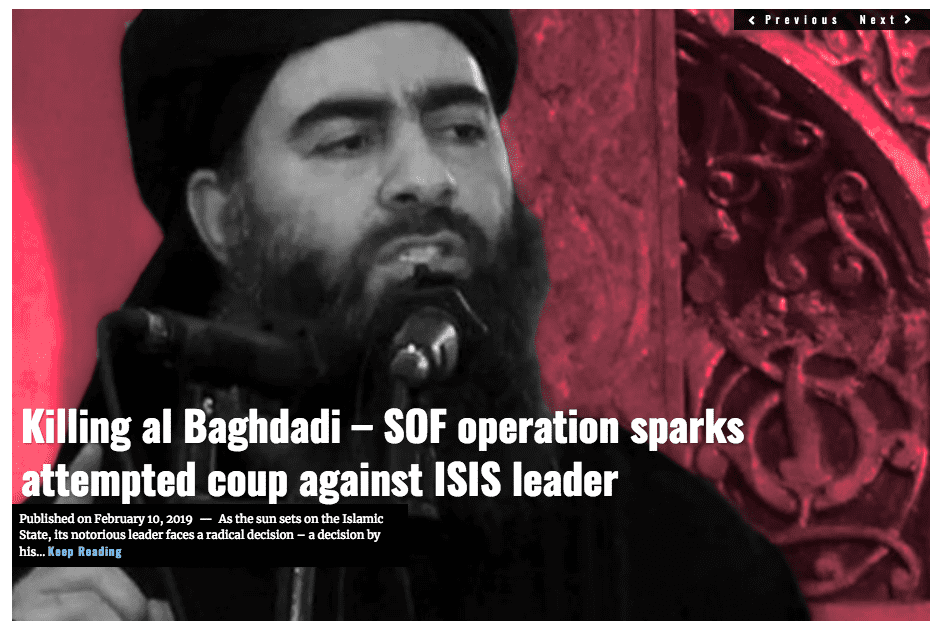
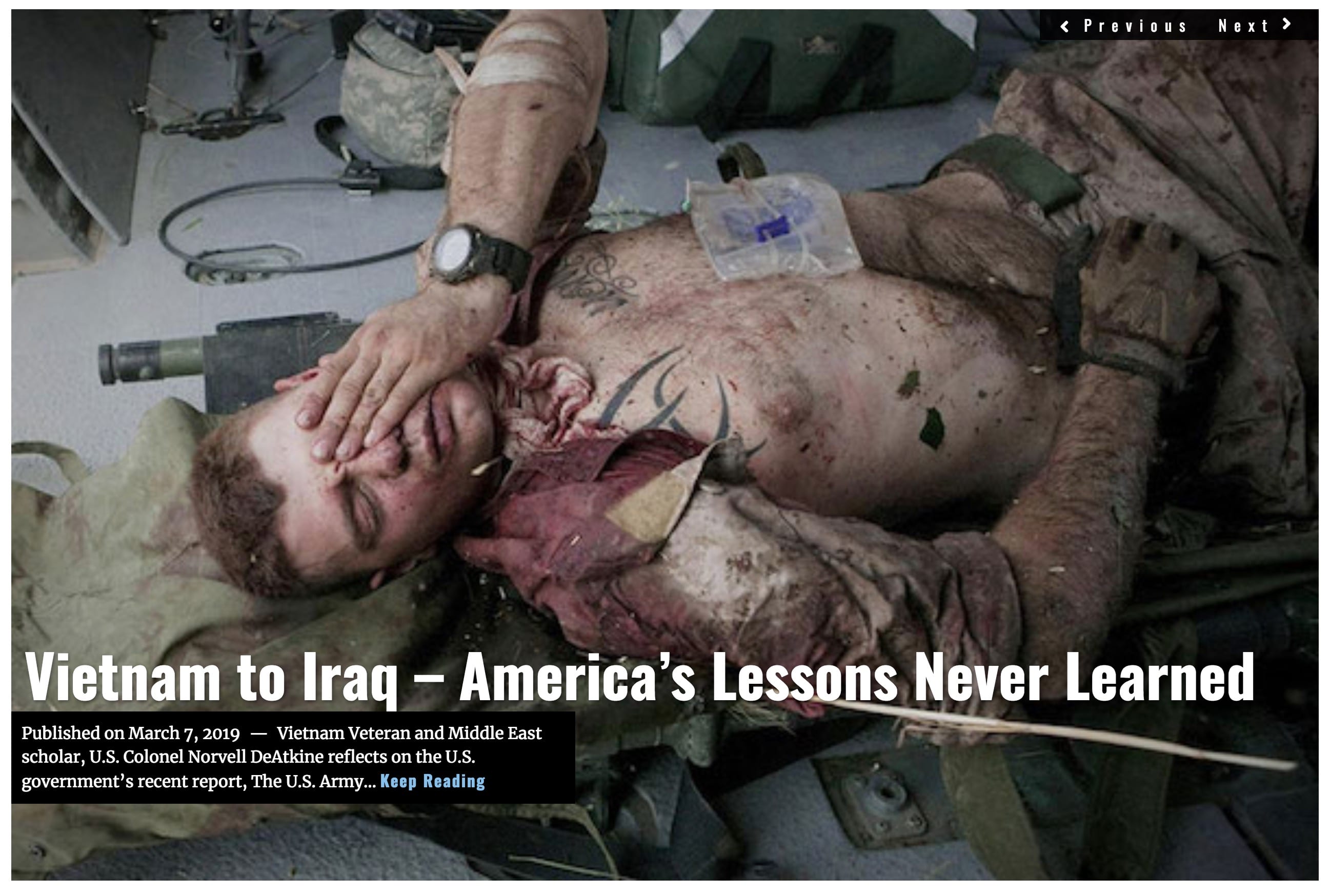
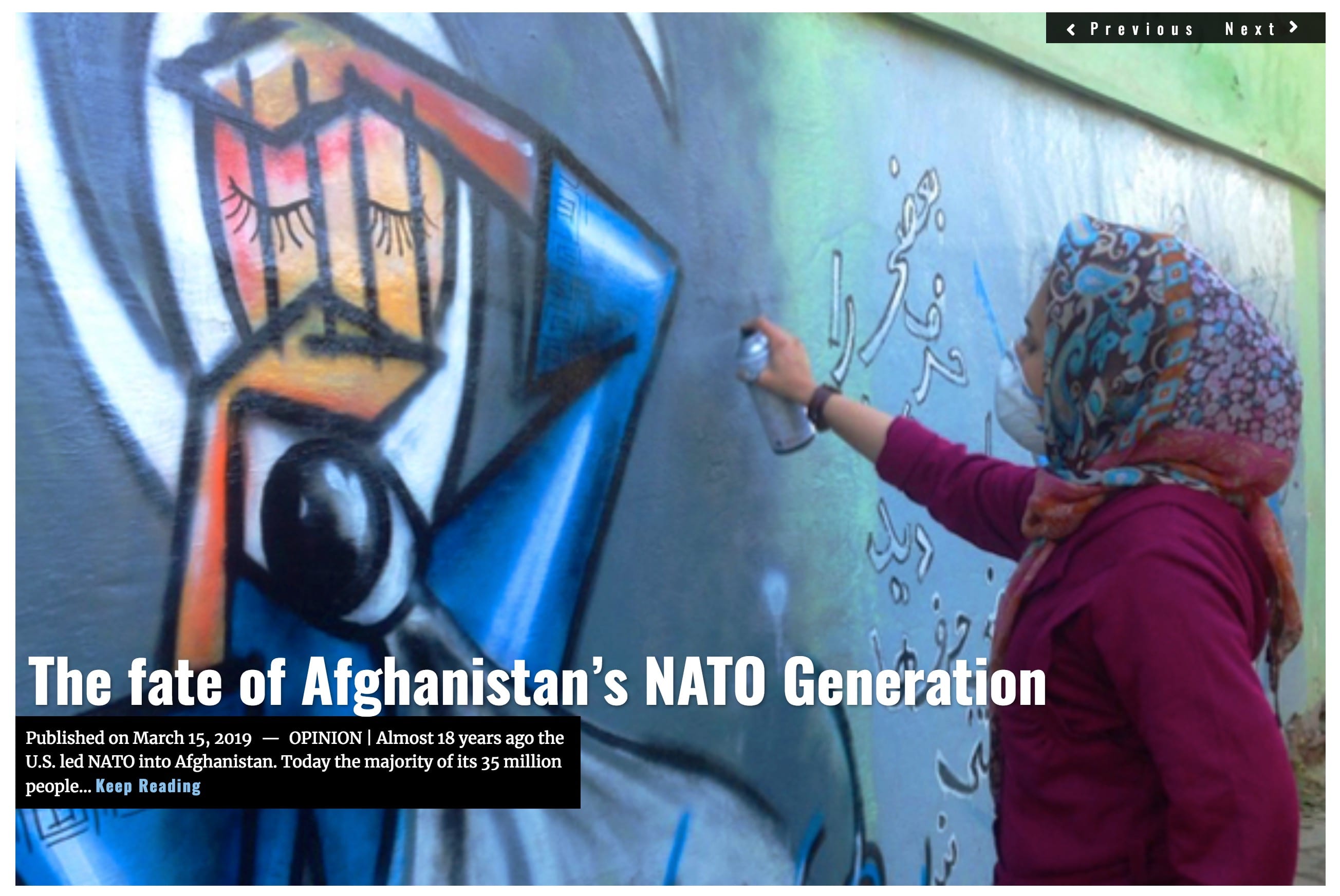
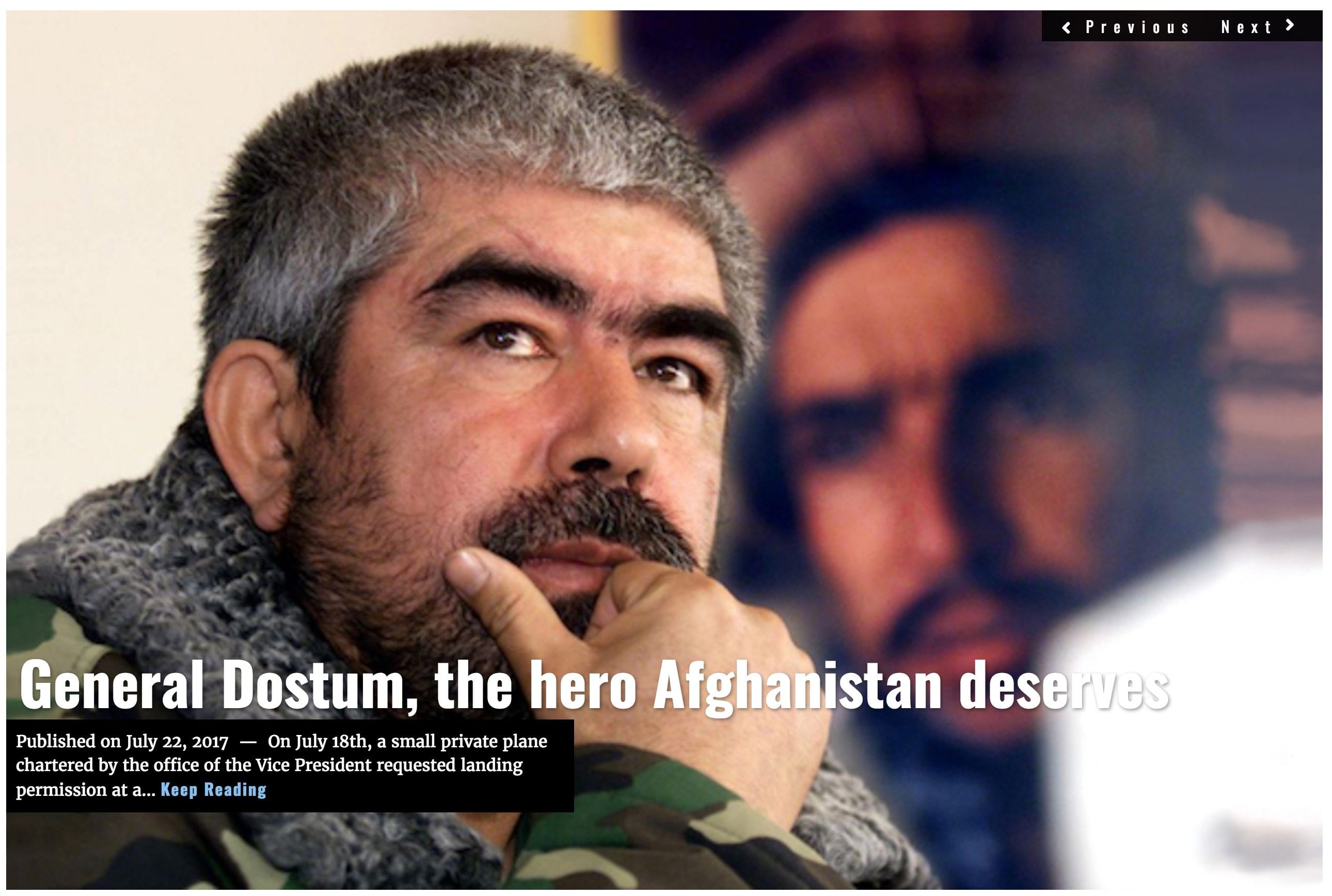
![Image The fate of Afghanistan’s NATO Generation [Lima Charlie World][Photo: Shamsia Hassani]](https://limacharlienews.com/wp-content/uploads/2019/03/The-fate-of-Afghanistan’s-NATO-Generation-Lima-Charlie-World-Shamsia-Hassani-480x384.png)
![Image Afghanistan – A Bold Solution [Lima Charlie News]](https://limacharlienews.com/wp-content/uploads/2018/12/Afghanistan-A-Bold-Solution-Lima-Charlie-News-480x384.png)
![Image Giving the Afghan Air Force Blackhawks is a terrible idea [Lima Charlie News]](https://limacharlienews.com/wp-content/uploads/2018/05/Afghanistan-Black-Hawk-Helocopters--480x384.jpg)
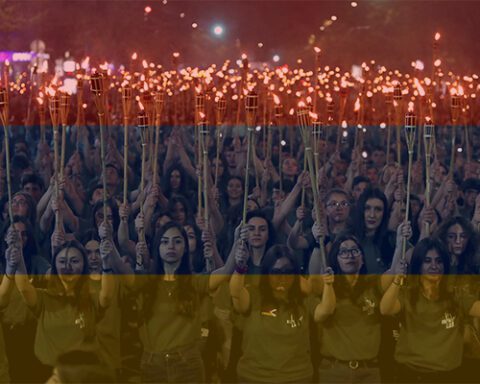

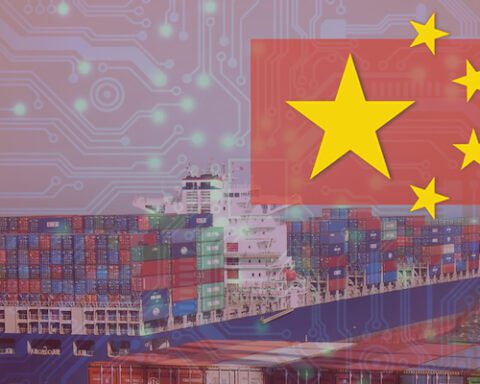

![Blossoming Russo-Turkish alliance leaves U.S., NATO behind [Lima Charlie News]](https://limacharlienews.com/wp-content/uploads/2019/07/Russia-Turkey-alliance-leaves-U.S.-NATO-behind-480x384.png)
![Image The fate of Afghanistan’s NATO Generation [Lima Charlie World][Photo: Shamsia Hassani]](https://limacharlienews.com/wp-content/uploads/2019/03/The-fate-of-Afghanistan’s-NATO-Generation-Lima-Charlie-World-Shamsia-Hassani-150x100.png)
![Image Afghanistan – A Bold Solution [Lima Charlie News]](https://limacharlienews.com/wp-content/uploads/2018/12/Afghanistan-A-Bold-Solution-Lima-Charlie-News-150x100.png)